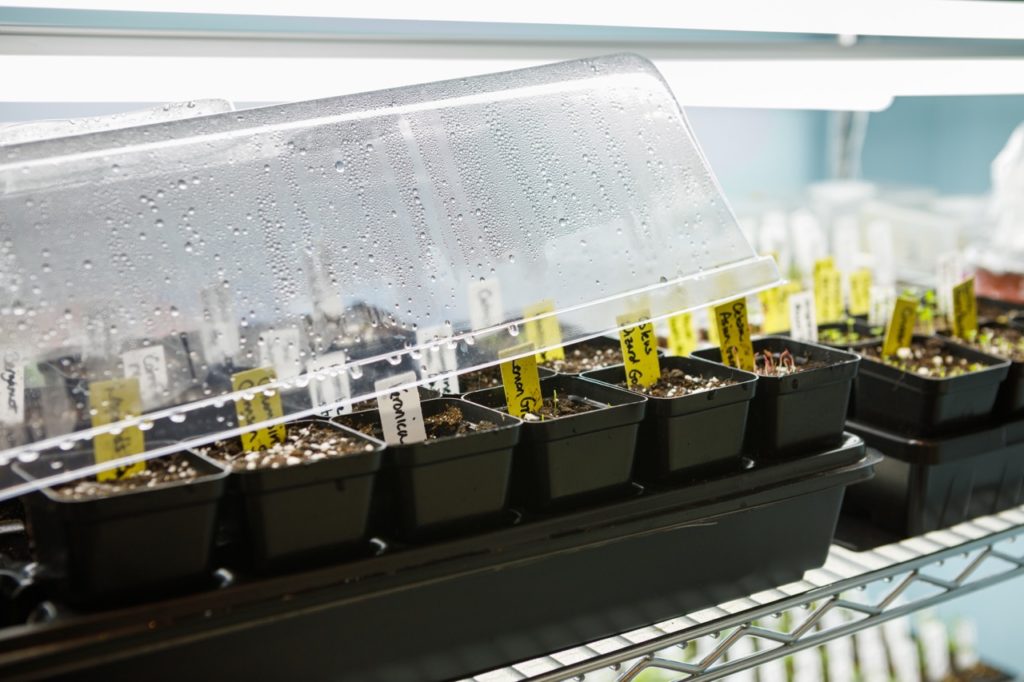PERENNIALS > CYCLAMEN > SOWING

Elizabeth is a Permaculture Garden Designer, Sustainability Consultant and Professional Writer, working as an advocate for positive change. She graduated from the University of St. Andrews with an MA in English and Philosophy and obtained a Diploma in Applied Permaculture Design from the Permaculture Association.
Reviewed By COLIN SKELLY

Colin is a Horticulturist and Horticultural Consultant with experience in a range of practical and managerial roles across heritage, commercial and public horticulture. He holds the Royal Horticultural Society’s Master of Horticulture award and has a particular interest in horticultural ecology and naturalistic planting for habitat and climate resilience.
Contributions From TREVOR WILTSHIRE

Trevor Wiltshire is the Registrar of The Cyclamen Society. He has previously worked at the RHS Wisley site, as the Alpine Garden Society Cornwall Group Secretary and as former Executive Committee Member of Cornwall Garden Society.
IN THIS GUIDE
CYCLAMEN GUIDES
Common Problems
Container Growing
Growing From Seed
Indoors Care
Overwintering
Propagation
Red Varieties
Transplanting
Cyclamen can make great plants for your garden or for inside your home.
The key lies in finding the right variety for your desires.
Hardy cyclamen are grown outdoors, while more tender varieties can be grown as houseplants.
Growing cyclamen from seed is not the easiest way to obtain either of these types of plants for your garden or home.
However, with some know-how and a lot of patience, both hardy and tender Cyclamen can be propagated from seed.
To grow cyclamen from seed:
- Collect ripe seed from an existing cyclamen or purchase seeds of the right type.
- Soak the seeds overnight.
- Sow seeds immediately after soaking in a tray or pots full of seed compost.
- Place a protective cover over your seeds and wait for germination.
- Pot on or plant out once seedlings are large enough to handle.
| Difficulty | Hard |
| Equipment Required | Seeds, pots or seed trays, potting medium |
| When To Sow | June-July |
| When To Plant Out | Autumn-Spring |
When To Sow Cyclamen
“Sow seed in June and July so that, by autumn, they are robust plantlets that can then keep growing through the winter”, Trevor Wiltshire from The Cyclamen Society explains.
“Late sowings are possible, but this requires more skill and the correct aftercare.
“If sowing later in the year, provide them with some shade in summer and water carefully”.
1) Collect Cyclamen Seeds
If you are growing cyclamen already in your garden, you can consider collecting the seeds from an existing plant to obtain new plants.
“If Cyclamen are setting seed, then you should start to see some self-seeded plants spring up,” shares Master Horticulturist Colin Skelly.
“Collecting the seed and sowing in ideal conditions will help to accelerate this process.
“You can also start to spread the Cyclamen to more distant parts of the garden, assisting its dispersal.”

The seeds of most species of cyclamen can be collected when the flower stalk coils down and the maturing seed capsule draws closer to the soil.
It is important to make sure that you collect the seeds from the capsules only once they are fully ripe.
Immature seeds will not germinate correctly.
Determining the right time to collect seeds can be challenging, which is why this is a more challenging proposition and not necessarily something for beginners to try.
When cyclamen of tender types is grown indoors, deadheading will often preclude the formation of seeds, but seeds of large-flowered, tender cyclamen can sometimes be purchased and sown at home.
2) Soak Seeds Overnight
Germination rates will be best with both hardy and tender types if you soak the seeds in warm water for at least 12 hours prior to sowing.
3) Sow Seeds In Containers
Once you have soaked your seeds, place these into trays or small pots filled with a suitable seed starting medium.
A specialist seed compost or a homemade mix with leaf mould incorporated into it can be ideal.

Try to space the seeds as evenly as possible and cover them with around 1cm of compost or horticultural grit.
Make sure that you cover the seeds over properly since light can inhibit germination.
4) Cover Seedlings
It can be beneficial to cover your pots or trays with glass or plastic trays to retain moisture and provide the right conditions for the seeds to germinate.
Make sure that the seeds remain at a minimum of 16°C and no more than 21°C.

Note that germination times can vary significantly.
Germination will often take place after 30-60 days, but with some varieties, it can take up to a year or even longer for your seedlings to emerge, so be sure not to give up on them too soon.
5) Plant Outside
Leaves will emerge from small tubers and as soon as this happens and the seedlings are large enough to handle, you can move them to their new growing positions.
Hardy types can be potted up and placed outside, or given a suitable spot in your garden, with the small tubers 2-5cm deep.

They prefer a spot in partial shade with fertile, humus-rich, well-drained soil.
Tender types should be potted up into their own individual pots, filled with John Innes No 2 with added grit and leaf mould, or another similar medium.
The tuber should be planted level with the top of the compost.

